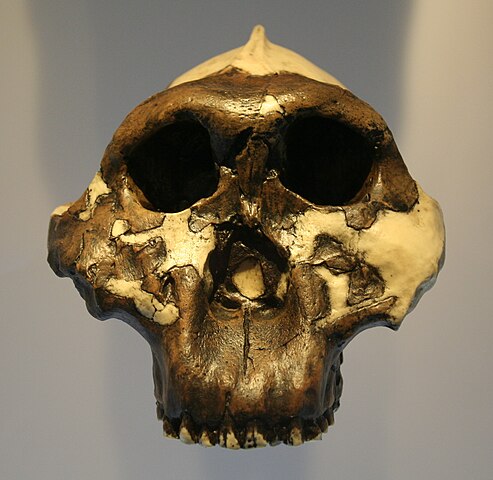Paranthropus is a genus of extinct hominins that lived in Eastern and Southern Africa from about 2.7 to 1.2 million years ago. Paranthropus species are characterized by robust craniodental features and a specialization toward a diet of tough plant foods. Here’s a guide to understanding the human body of Paranthropus:
1. Cranial Characteristics:
- Robust Skull: Paranthropus species, including Paranthropus boisei and Paranthropus robustus, had robust skulls with pronounced sagittal crests. The sagittal crest served as an attachment site for powerful jaw muscles.

- Dish-shaped Face: The face of Paranthropus species is characterized by a dish-shaped or prognathic face, projecting forward.
2. Dental Morphology:
- Large Teeth: Paranthropus had large molars and premolars, indicative of adaptations for processing tough, fibrous vegetation. The teeth are characterized by thick enamel, which is resistant to wear.
- Reduced Canine Size: Compared to earlier hominins and some contemporary species, Paranthropus had reduced canine size.
3. Masticatory Adaptations:
- Sagittal Crest: The pronounced sagittal crest and robust mandible of Paranthropus suggest powerful chewing muscles. These adaptations were likely for processing hard and tough plant materials.
- Bite Force: The robust craniodental features of Paranthropus indicate a strong bite force, allowing them to chew and grind fibrous plant foods.
4. Postcranial Skeleton:
- Robust Limbs: While the postcranial skeleton of Paranthropus is not as well-known as the craniodental features, it is believed that they had robust limbs. However, they retained a basic bipedal posture.
5. Tool Use:
- Limited Tool Use: Paranthropus is associated with the Oldowan and Acheulean stone tool industries, but their tools were relatively simple compared to those associated with Homo species. Tool use was likely for basic activities such as processing plants and possibly for butchering meat.
6. Dietary Adaptations:
- Vegetarian Diet: The robust craniodental features of Paranthropus are indicative of adaptations for a diet primarily consisting of tough, fibrous plant foods. This specialization is in contrast to some contemporary Homo species, which had more varied diets, including meat.
7. Social Behavior:
- Group Living: The presence of robust craniodental features and tools suggests that Paranthropus may have lived in social groups. Cooperation within these groups would have been important for survival, including tasks related to food processing.
8. Evolutionary Relationships:
- Parallel Evolution: Paranthropus represents a side branch in the hominin evolutionary tree. While contemporary with early Homo species, Paranthropus is not considered a direct ancestor of modern humans. Instead, it represents an example of parallel evolution with a different adaptive strategy.
9. Temporal Range:
- 2.7 to 1.2 Million Years Ago: Paranthropus species existed during the Pliocene and early Pleistocene epochs, coexisting with other hominins like early Homo species.
10. Extinction:
- 1.2 Million Years Ago: Paranthropus species became extinct around 1.2 million years ago. The reasons for their extinction are not entirely clear but could be related to changes in climate, habitat, or competition with other hominins.
Understanding the human body of Paranthropus involves recognizing its robust craniodental adaptations for a specialized diet of tough plant foods. While not a direct ancestor of modern humans, Paranthropus provides valuable insights into the diverse adaptive strategies employed by hominins during the early stages of human evolution. Ongoing research and new discoveries continue to enhance our understanding of the biology and behavior of Paranthropus species.











